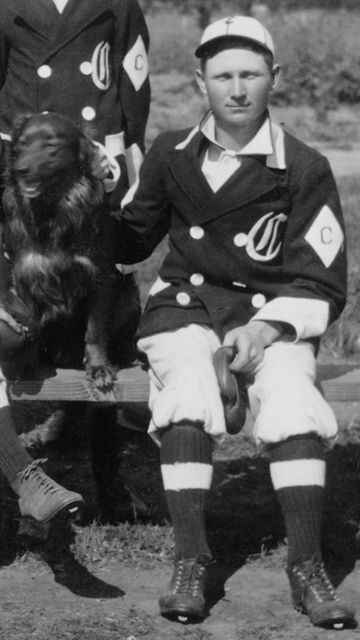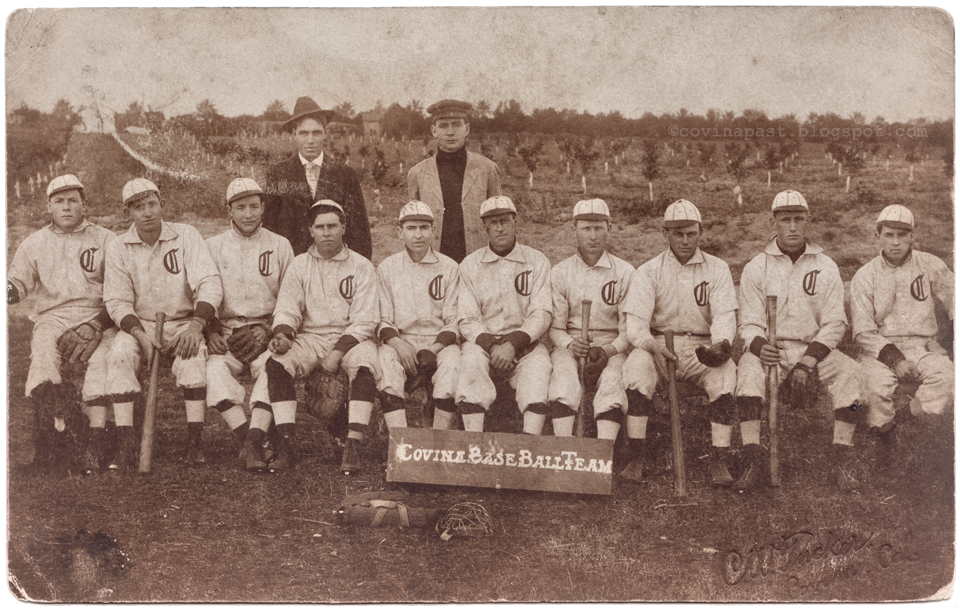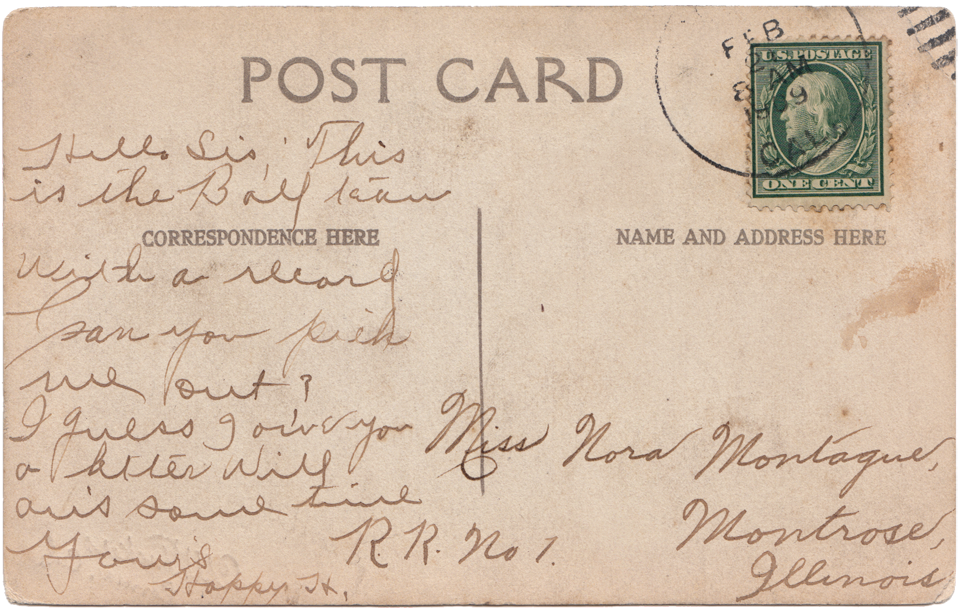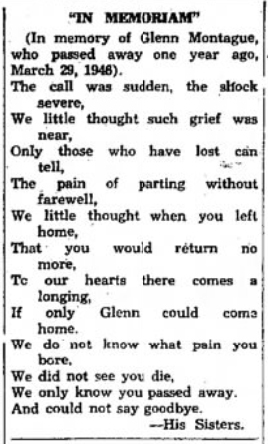
Meet Mr. Glenn Montague, a/k/a "Monty" to his teammates and friends. I've gotten to know this gentleman pretty well the last couple of weeks, and I think you'd enjoy meeting him, too. Our acquaintance began when I stumbled upon this rare postcard.

The Covina White Squadron, January, 1909. Montague is the fourth player from the right.1 (For all the players' names and positions, click here.)
The postcard is special to me for two reasons. First, I did not know until now that Covina ever had its own town team. Also, this particular postcard was inscribed and mailed by one of the ballplayers themselves, which gives it a unique personal touch:

"Hello Sis; This is the Ball team with a record Can you pick me out? I guess I owe you a letter Will an's some time Your's Happy H."
Assuming that "Happy H." was just a pet name, I did a search in the Argus newspaper archive for "Montague" in "1909" and bingo, that unlocked the treasure trove of articles that would reveal the long-lost history of both of Covina's champion baseball teams of that year.
Reading the many writeups, it didn't take long for me to notice that outfielder Montague was in virtually every game. Changes in the lineup and team roster were frequent, but Montague was clearly a mainstay. When I finally tallied up all the available stats, it turned out that Monty played in 42 of Covina's 43 games in 1909. No other player even approached that level of consistency. He was a steady hitter, too, with a respectable .311 combined batting average. So perhaps it was no wonder that when the Chicago White Sox came to play Covina on March 7, 1910, Montague was tapped to be the lead-off man for the home team.2
Off the field, Monty was a quintessential early-20th century Covinan. Born in 1880 in Gadsden, Indiana, Glenn Montague moved out west in 1904 and worked all the rest of his life tending groves for the Covina Orange Growers Association, where he earned praise for his pleasant personality and the excellence of his work. In his leisure time, the quiet bachelor enjoyed hunting and fishing trips in the mountains with friends, and was known for charitably sharing the fruits of his harvest with whomever might be in need.3
His working career also happened to span the entire peak period of the citrus industry in Covina. Monty was a present witness to it all: from the boom period of the aughts to the "quick decline" blight and suburban encroachments that commenced in the mid-Forties. I envy him for getting to live through and experience Covina's heyday. If I could go back in time, that's precisely the era to which I'd most like to return.
Tragically, our goodfellow suffered a horrific death from burns received when his gas cooking stove exploded and his little cottage at 148 East Badillo was destroyed by fire.4 He died two days later in hospital in Los Angeles on March 31, 1946. Orlan Glenn Montague was 65 years old.
When word of Monty's death got around, the whole town pitched in to cover his funeral expenses, and the day he was buried at Oakdale Cemetery, the Covina Argus-Citizen published a 3-column elegy in his memory. It's one of the most moving tributes to a common man that I've ever read. All in all, it's clear that Glenn Montague was Covina's own "Angel in the Outfield," and he rightfully deserves an honorable mention in the town's history.

Covina Argus-Citizen, April 5, 1946. Click on the headline to read the whole obituary.

References:
1 Los Angeles Sunday Times, February 14, 1909, p.88.
2 Los Angeles Times, March 8, 1910, p.6.
3 Covina Argus-Citizen, April 5, 1946, p.8.
4 Covina Argus-Citizen, April 5, 1946, p.1.


Covina Argus-Citizen, March 28, 1947.
1 comment:
Thank you for your efforts to see that this man was not forgotten.
Post a Comment
To post a comment, you must login to this page with the Google Chrome web browser. That is the only way that works now.